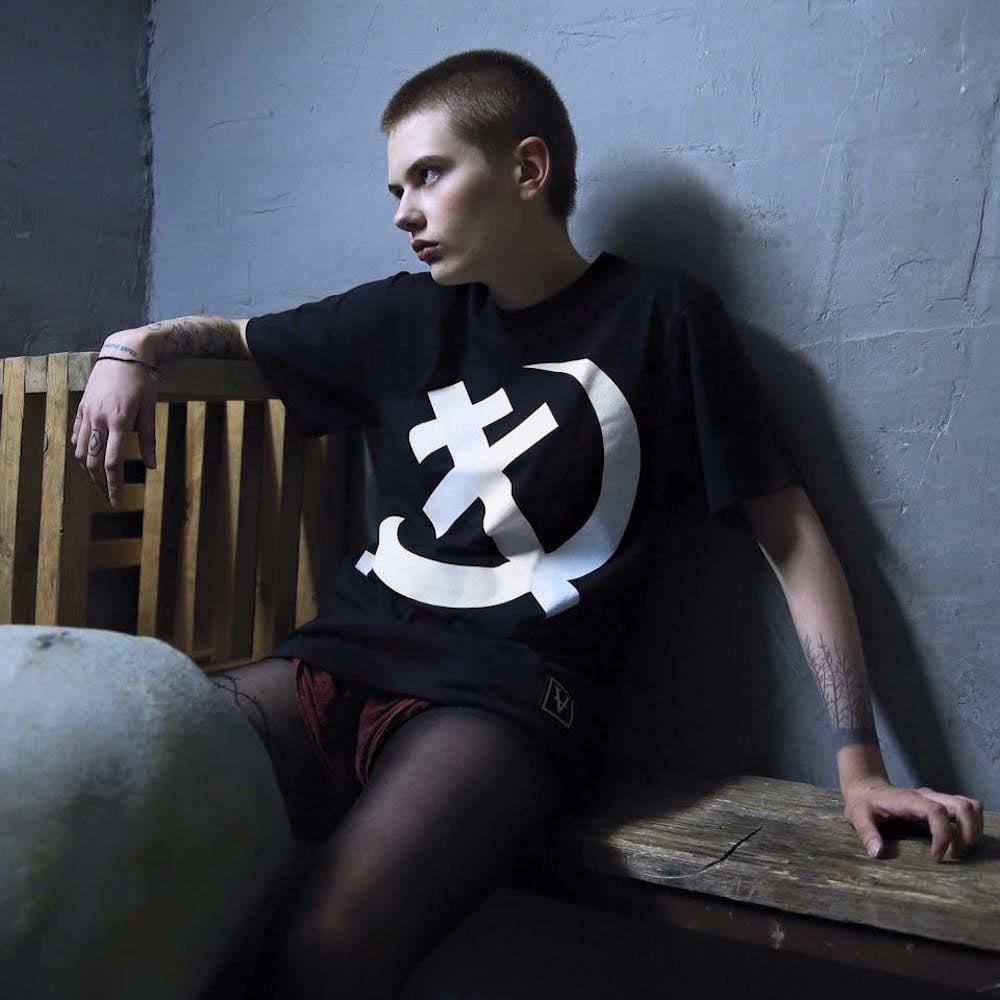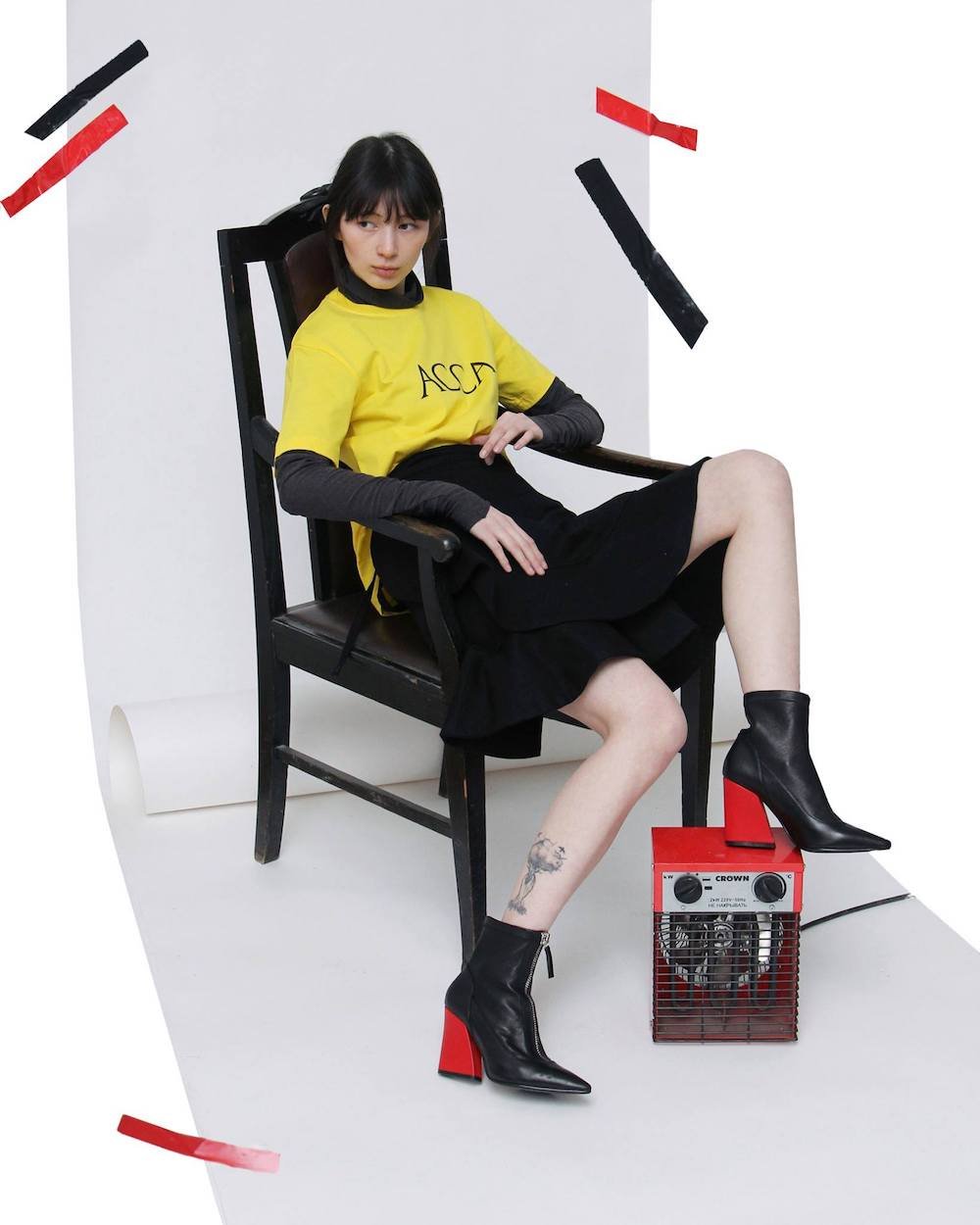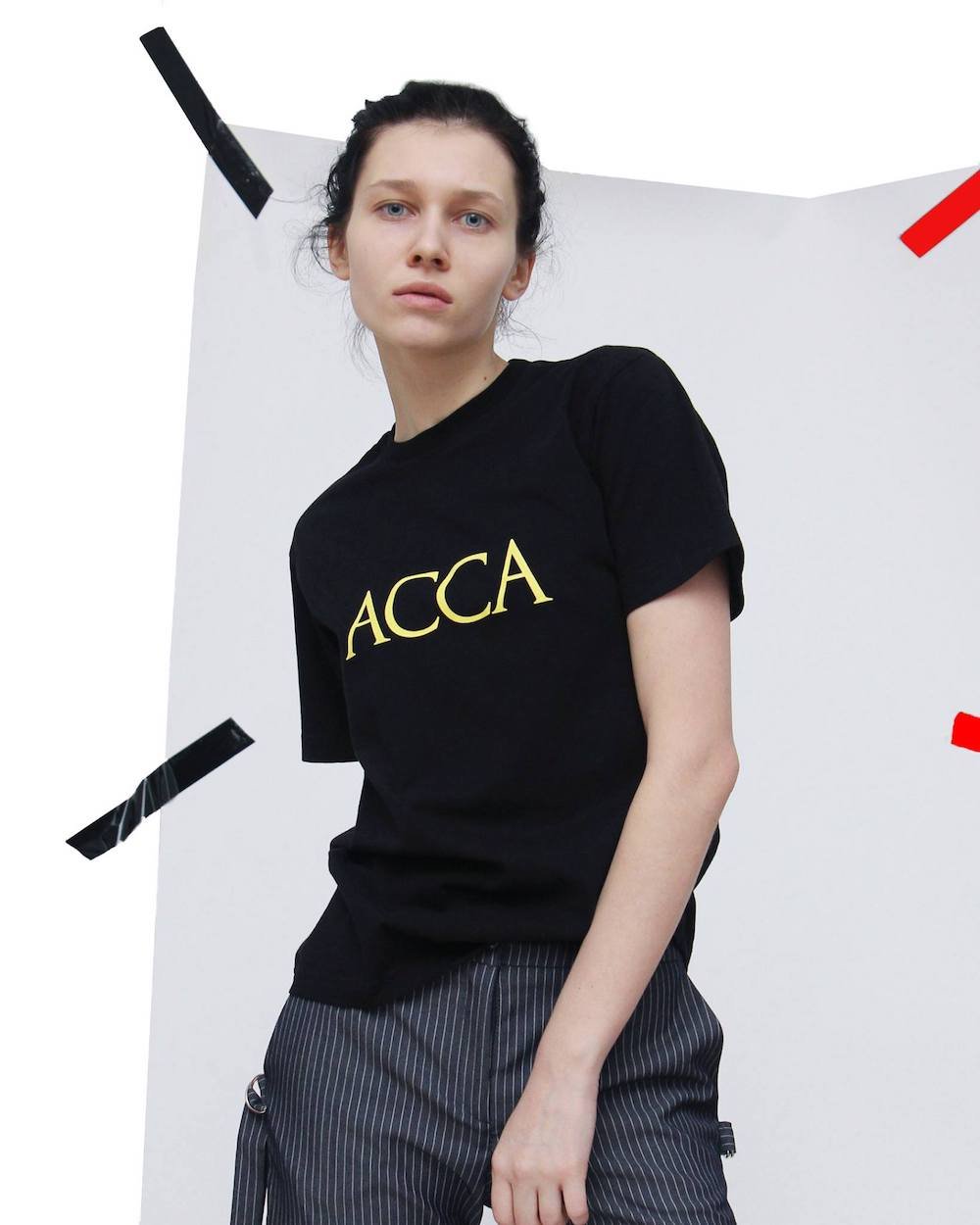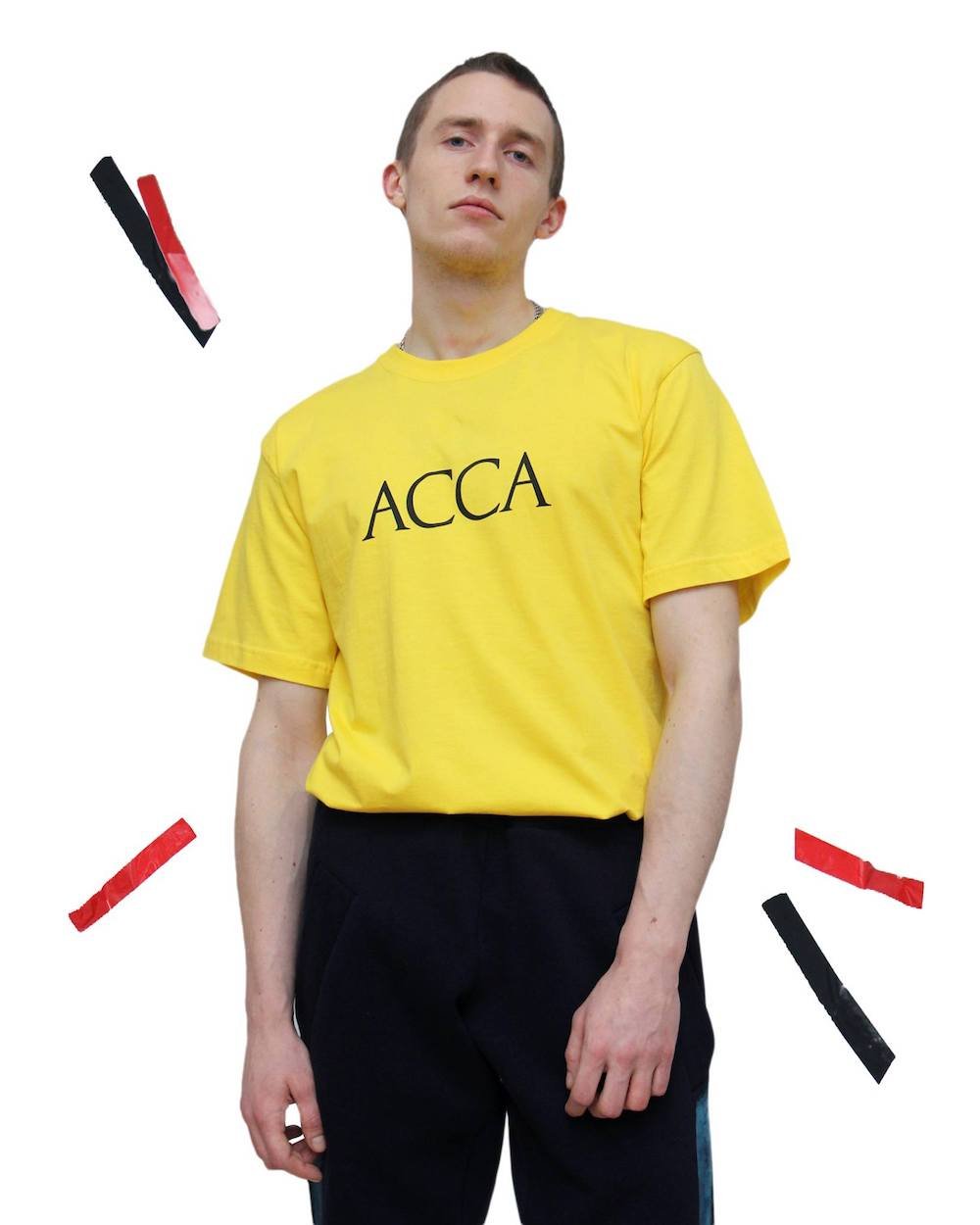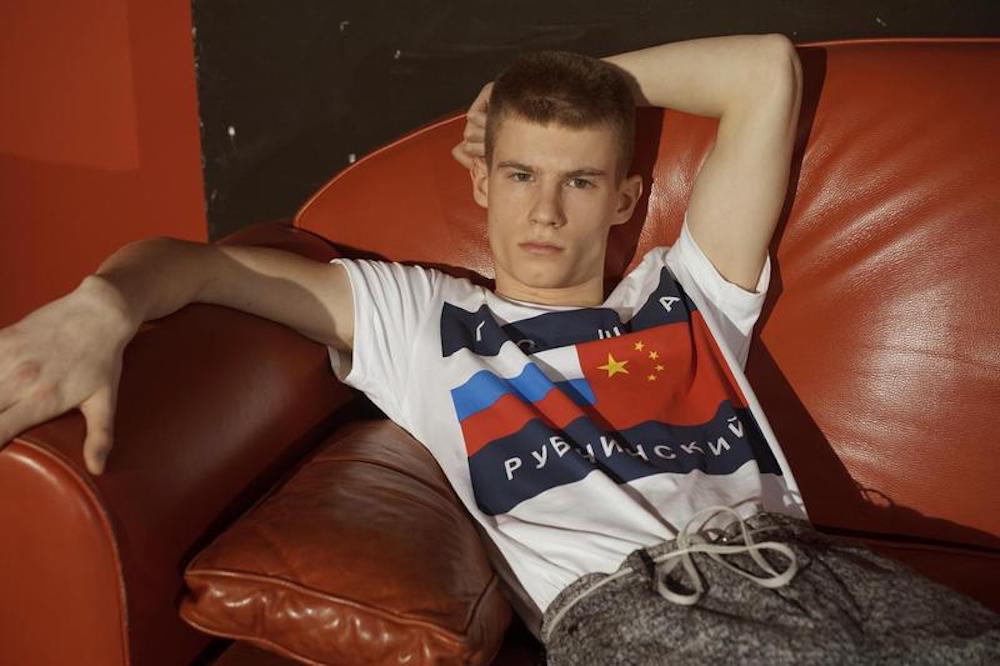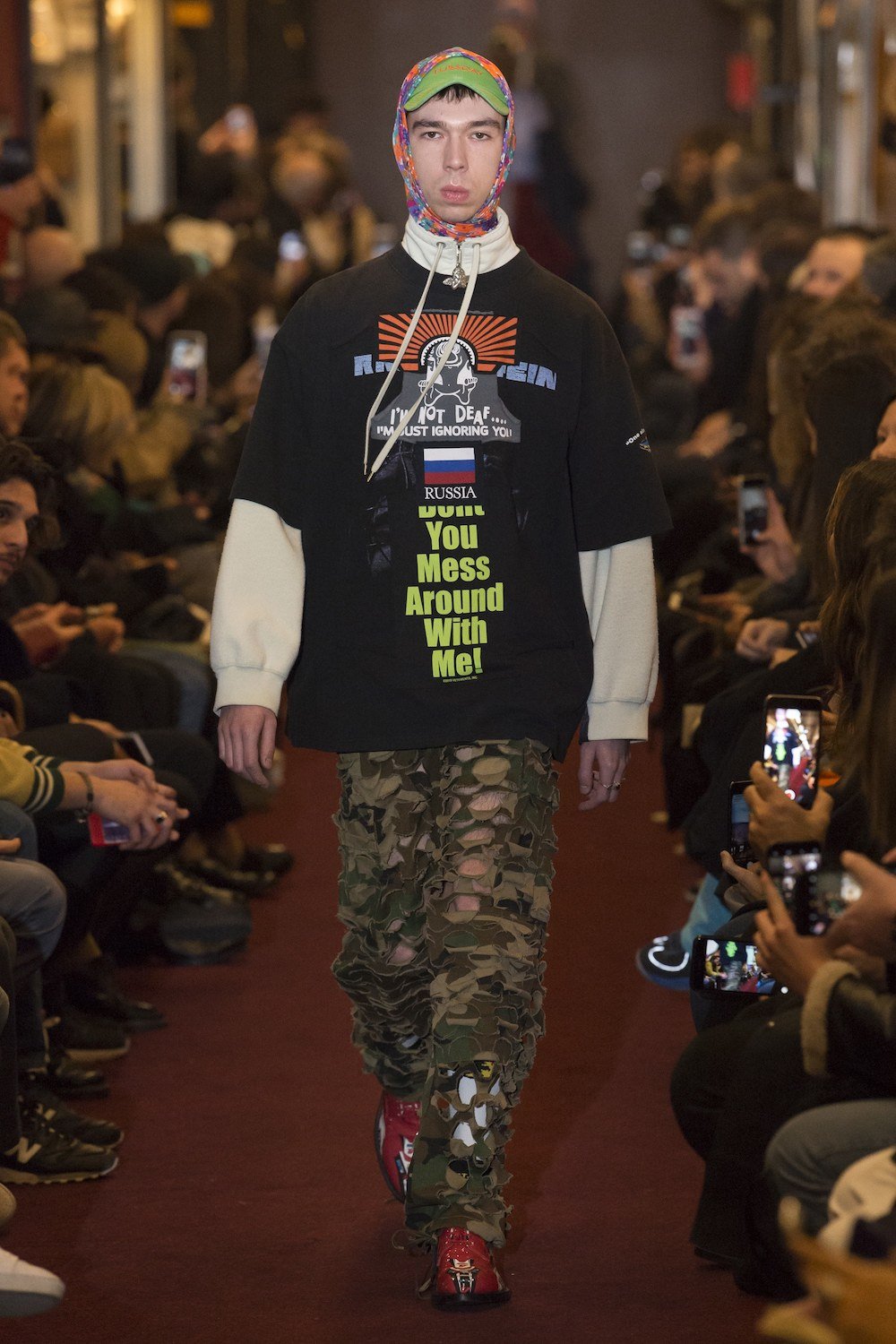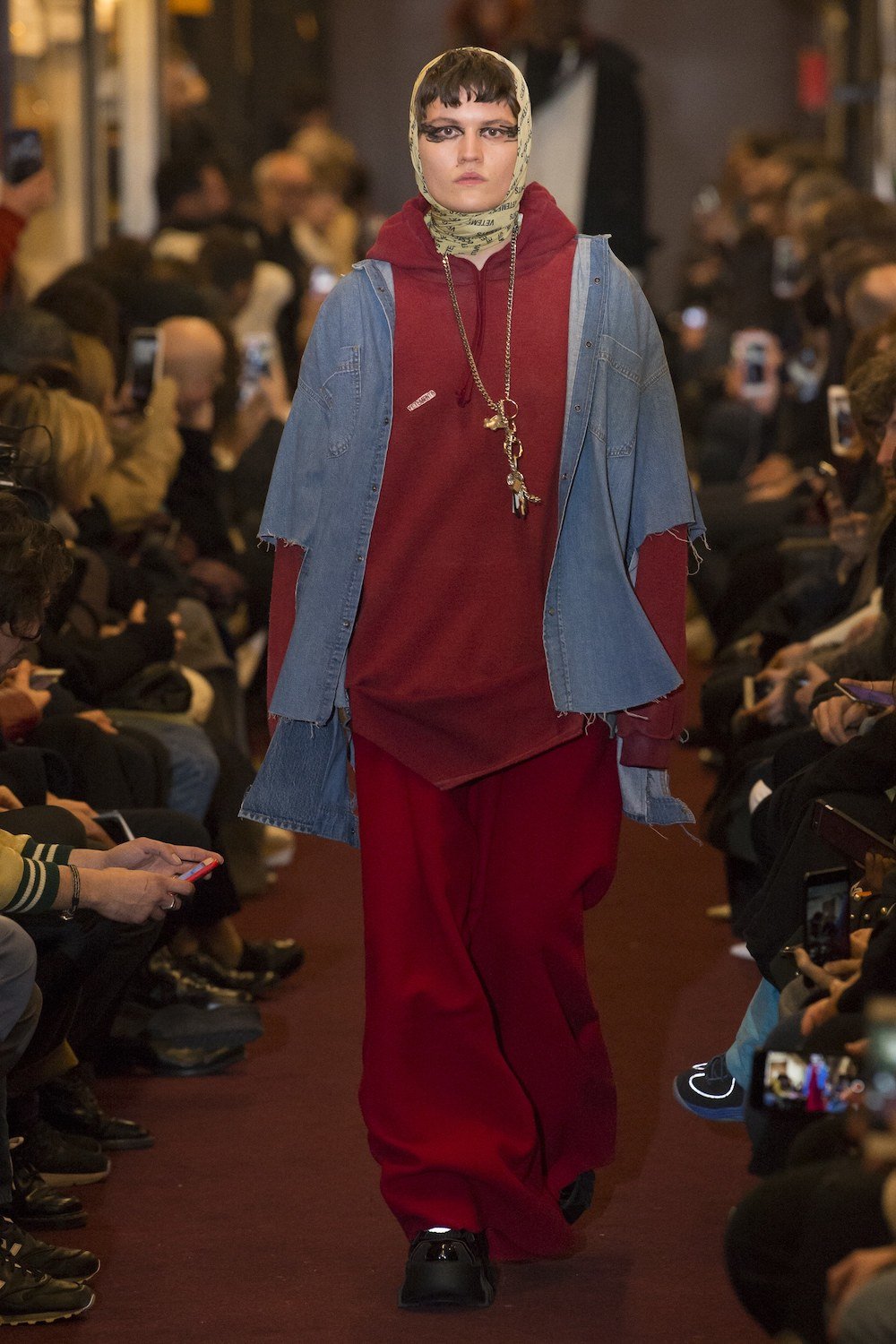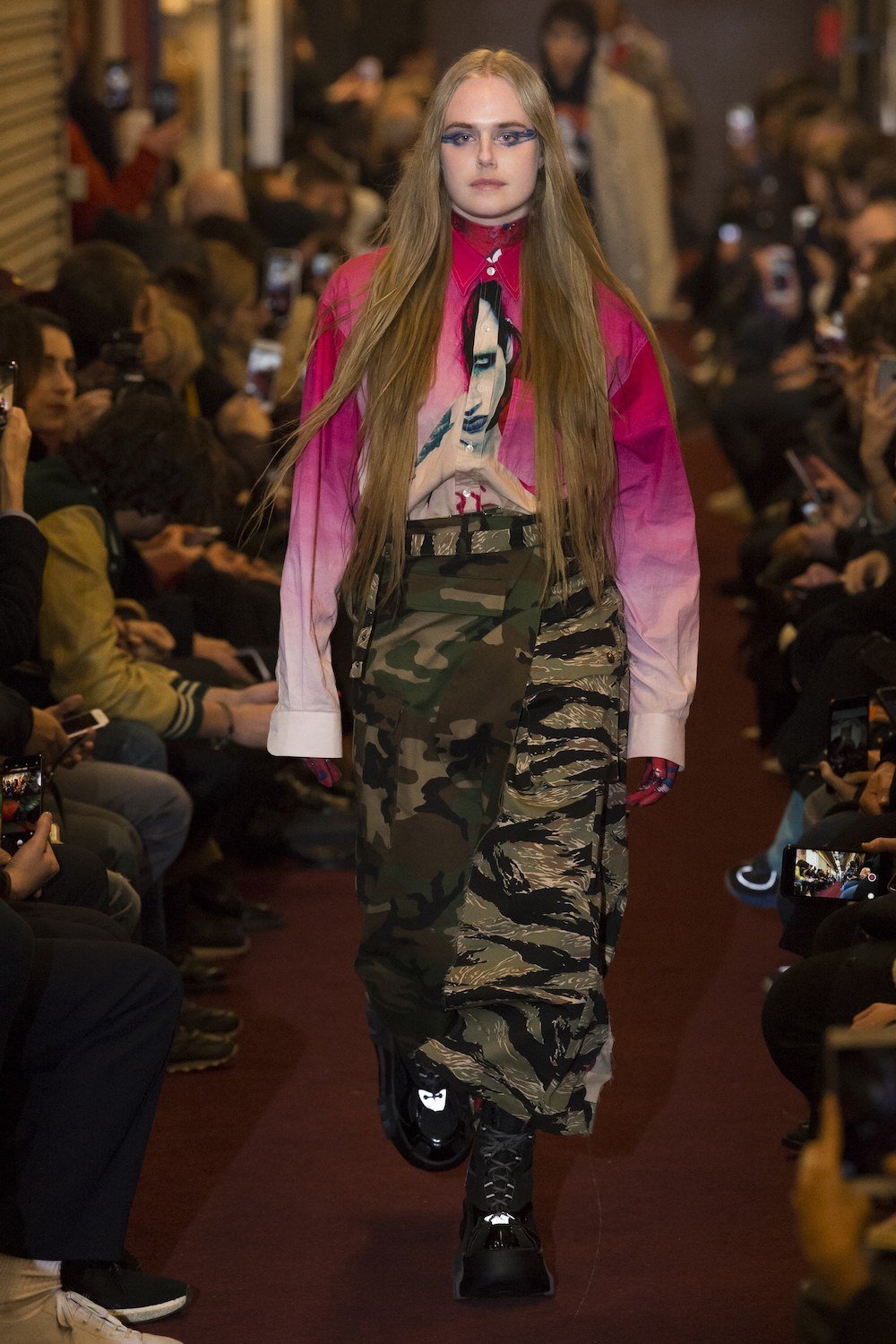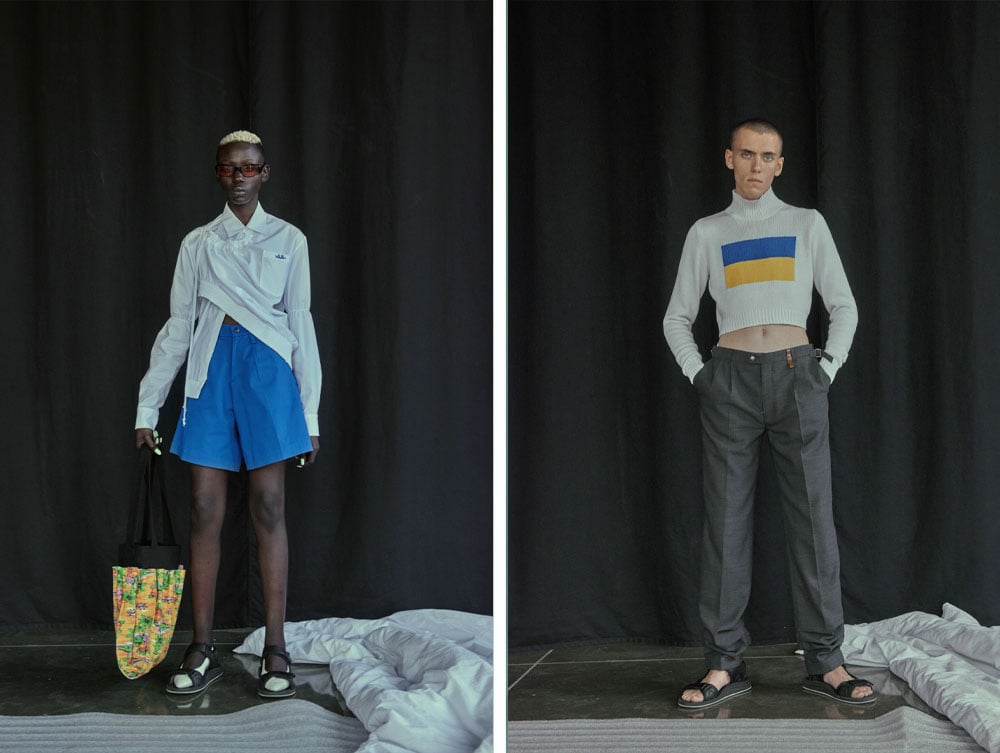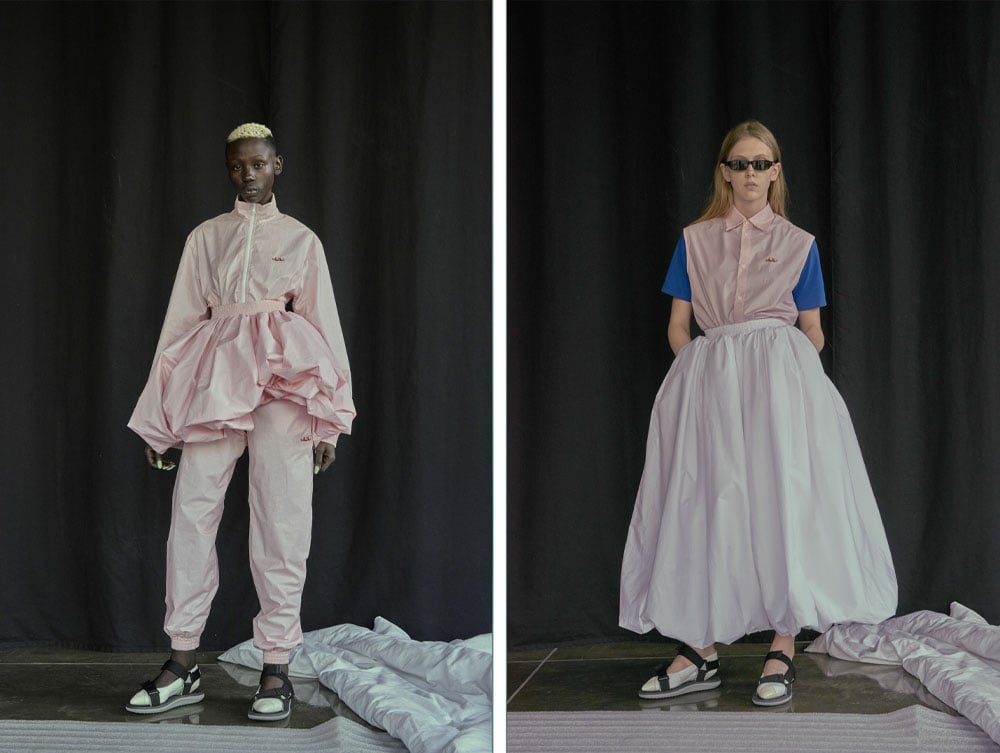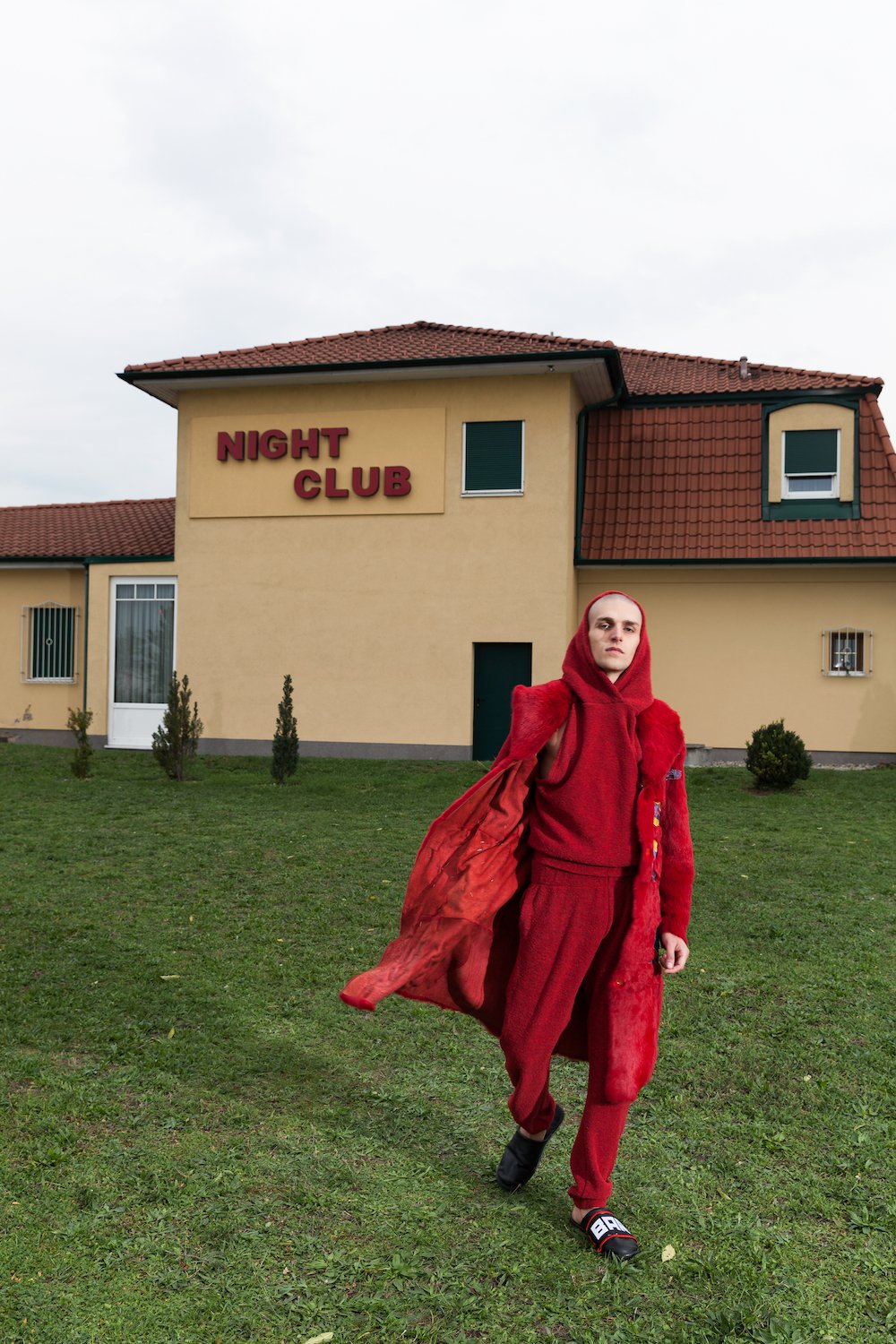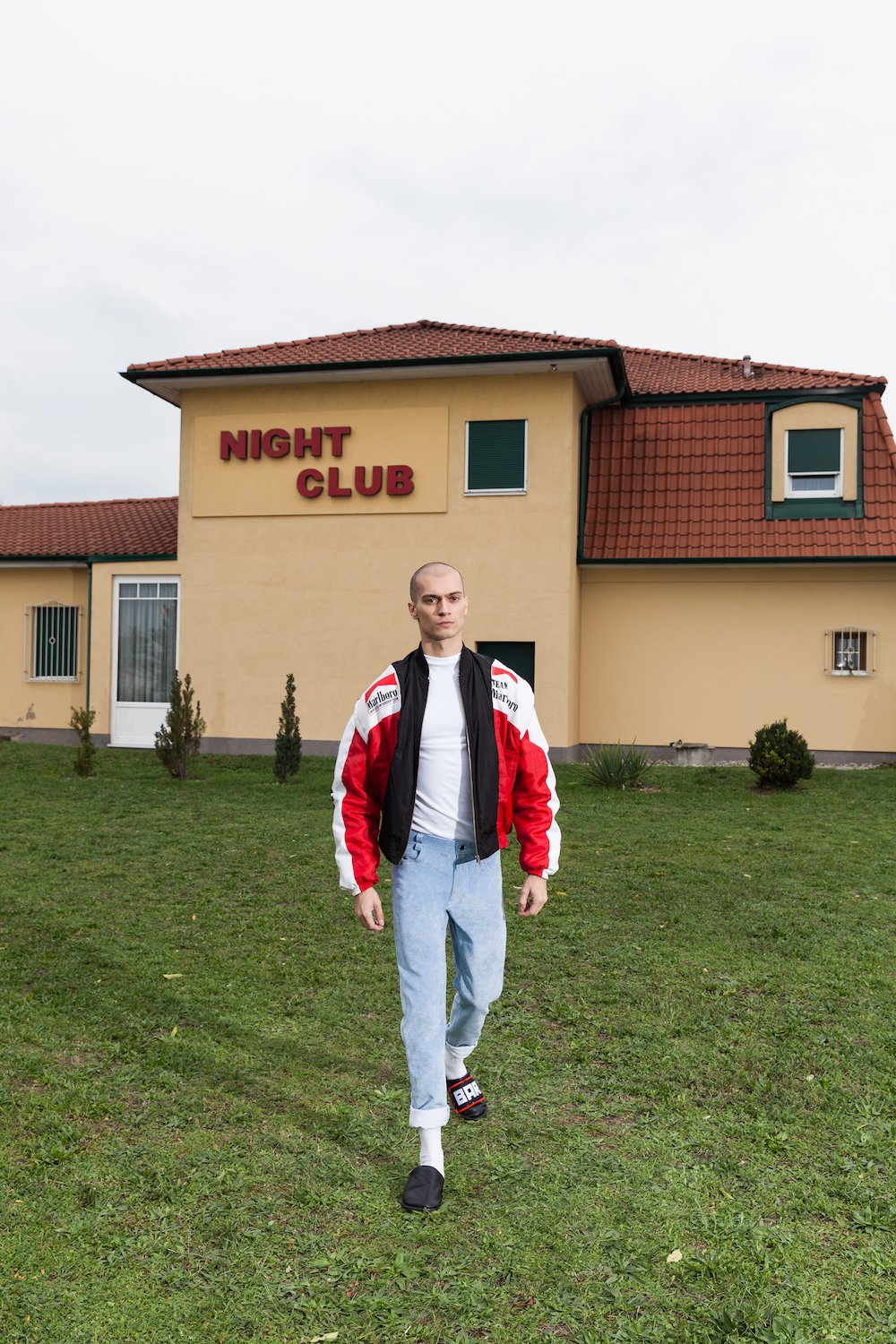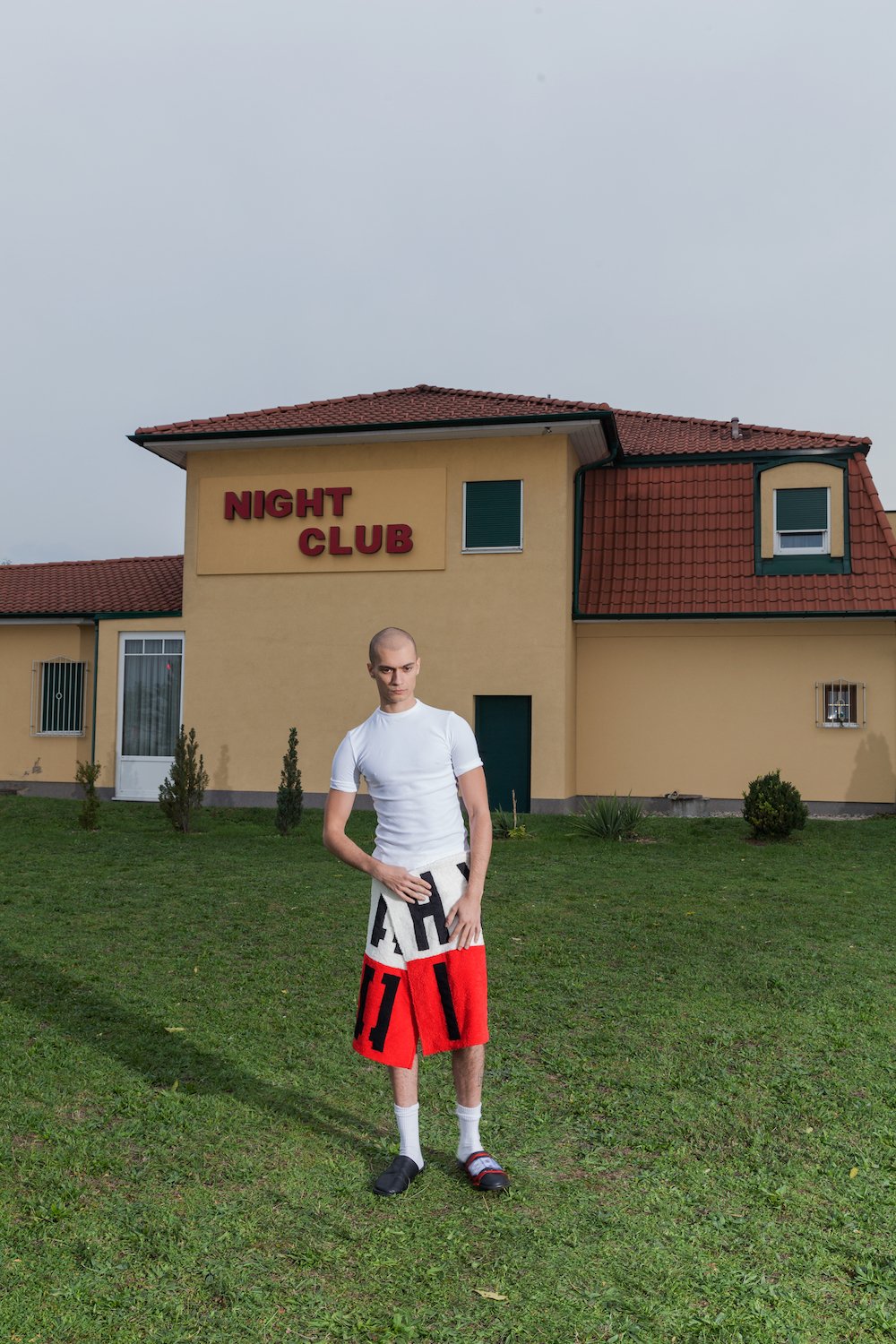Post-Soviet fashion: identity, history and the trend that changed the industry
How did a fashion trend born out of an identity search turn into a controversial myth about the post-Soviet space? Beyond tower blocks and T-shirts, Anastasiia Fedorova looks back at the aesthetic that captured the spirit of a generation
By the end of 2017, the so-called post-Soviet aesthetic had officially penetrated the mainstream. Drop by Topman or Urban Outfitters, and chances are you’d spot Cyrillic script snaking down the sleeve of a sports jumper, or printed across a t-shirt. For a Russian speaker, some of the words make sense (like the infamous Urban Outfitters “equality” t-shirt), but some don’t, due to poor spelling and grammar. In the true spirit of contemporaneity, it’s all about the medium not the message: Russian language and the visual tokens of post-Soviet cultural heritage dissolving in an ever-changing stream of meaningless signs on disposable garments. On the one hand, it sums up the nature of today’s fashion: constantly hungry for fresh, strange and unfamiliar images to commodify. On the other, it’s the first time this process has been applied so explicitly to the grand categories of nationality and history. In fact, it’s about much more than just fashion — the whole cultural dynamic between the centre and the periphery, between dominant West and (still) former East. On the cusp of emerging global cultural dialogue, it is essential that we ask: what is the post-Soviet aesthetic? Or, to be up to date, what was it?
In the last couple of years, I’ve been asked numerous times whether you see someone in Moscow wearing a Cyrillic slogan t-shirt? In fact, you would. It would be the same simple garment — a t-shirt, a sweatshirt, a football-style scarf — with similar minimal, angular letters. The key difference is, kids in Moscow don’t get their gear from Topshop or H&M — it comes from small DIY labels, each with their own take on what it means to be young and Russian today. The signature designs of Sputnik1985 include phrases like “I Will Always Be Against”, “I’m worse than you”, “Les Fleurs du Mal”, and a black and white image of the Moscow White House burning during the constitutional crisis of 1993. Volchok has a darker rave-inspired aesthetic, bestsellers being “No Tsars No Gods” socks and “Youth” t-shirts, and the latest range inspired by the Mortal Kombat arcade game. The collective Narvskaya Dostava not only pioneered feminist apparel in Russia, but also addressed the early history of Soviet youth culture with a series of t-shirts inspired by 80s cult films Courier; Tragedy, Rock Style and ASSA.
In today’s Russia, homegrown streetwear is a bit like making zines: — it’s a symbol of the DIY movement, and the new narrative tool everybody is keen to try out. And although all the labels and creatives in the scene have their own takes on style and substance, they share a preoccupation with trying to shape a unique identity for the generation born between the late 80s and the late 90s. Their snappy urban poetry and dark romanticism, melancholia and bitter yet tender, grungy nihilism were born in a transitional era of recent history, in the turbulent 90s and wealthy early 2000s, but also much later, in the game changing work of Moscow-based designer Gosha Rubchinskiy.
Gosha Rubchinskiy’s first ever runway show took place in 2008 on the brick-coloured running lanes of Moscow’s Sokolniki stadium. The attire of the youngsters who walked briskly around the stadium was sporty yet subversive. Sweatshirts and face masks were adorned with spikes, sleeves were cut off sharply above the shoulder and prints were inspired by hardcore and death metal. The collection featured an embroidery of a two-headed eagle merging with a roaring bear, and was called “Evil Empire”, a nod to Ronald Reagan’s infamous 1983 speech about the Soviet Union. In 2009, the designer took over an Orthodox-church-turned-Soviet-gymnasium, and it became apparent that his work was about something bigger than dismantling decades-old Cold War stereotypes. It was the beginning of a search for identity led by Russian kids who felt, with no history of youth culture behind them, as if they were the first ever to expereience what it was to be young in a completely new and alienating world. And although Rubchinskiy’s story was truly foreign for the fashion community, his visual and creative output have struck the nerve. As 032c editor-in-chief Joerg Koch recalls: “I was invited over by Moscow’s number one connector, Anna Dyulgerova, and we went with an international group to see Gosha’s second show. Some people wrote it off as an assemblage of sweatshirts and t-shirts, but I was electrified. The attitude of the collection and the scenography was one of undiluted, raw power.”
At the time, Russia and eastern Europe were terra incognita for the fashion world — but the burgeoning obsession was driven by more than just curiosity. Rubchinskiy’s work could satisfy the yearning for the edgy and the underground which was in the air. The streetwear boom was about to happen, with Supreme and Adidas becoming the new idols of the hypebeast generation. The boundaries of luxury and street, tasteless and appropriate, high and low were merging — and the controversial myth of the post-Soviet space was just the right fit. These badass young Russians were the last exotic Other, the forbidden fruit, a figure completely unknown yet rooted in Cold War fears. In the post-globalisation Western world, where everyone dresses more or less the same, drinks Coca-Cola and drives a German car, this new localism looked authentic in its otherwordliness. Like Berlin a couple of decades ago, it was poor but sexy.
Suddenly kids all over the world were willing to dress up to look Russian; trade Rubchinskiy’s garments between Tokyo and Paris, and buy knockoffs in Seoul; ride the London Tube with a Russian flag across the chest; read up about the history of the Soviet Union. In 2015, I remember getting a Twitter message from a girl who was in love with a teen fan of Gosha somewhere in Australia, asking for a cultural briefing on his aesthetic. Compiled from memories of the post-Soviet culture clash, the radical style of 90s Russian fashion magazines, and the dress code of the new tribes of Moscow club kids, Rubchisnkiy’s vision of Russianness has become a code for a new global subculture, and inevitably took on a life of its own.
By the time Gosha Rubchinskiy had his runway debut at Paris Fashion in Summer 2014 (now backed by Comme des Garçons) he was already described by the Western press as part of the post-Soviet new wave. Demna Gvasalia, creative director of the hyped Parisian label Vetements, also happened to be from the post-Soviet space — he was born in Georgia and moved to Germany at the age of 20. In his interviews he emphasised the influence of his background: the informational vacuum of his Soviet childhood, his hunger for and tremendous discovery of Western culture. Stylist Lotta Volkova, one of his key collaborators and another pioneer of an edgy aesthetic with a strong subcultural sensibility, was born and raised in Vladivostok in the Russian Far East before moving to Paris via London. All together, the three seemed to be an agenda-setting community whose background unified them while acting as an indispensable creative tool. They couldn’t have been more different from the wealthy and ultra-feminine Russian Fashion Pack making headlines as recently as 2012. The fashion heroes of the new times were outsiders, sharing an empowering underdog mentality, love for the darker aspects of spirituality and a quest for beauty in the ugliest places. Suddenly, conventional beauty was a bore, and the coolest style became about the strange, the strong and the independent. Moscow-based model agency Lumpen had just this to offer: Russian kids scouted on the street have since walked for Balenciaga, Vetements and Comme des Garçons.
But as much as fashion purports to exist as a self-contained system, it’s always determined by the larger historical and geopolitical context. 2014 saw the Ukrainian revolution on Kiev’s Maidan, the annexation of Crimea and the start of armed conflict in Donbass — it was a turning point in the political history of the post-Soviet space. Since then we’ve lived with the nauseating sensation of the Doomsday Clock speeding up, the consolidation of dark forces and the return of Cold War fears. At the same time, it’s been over two decades since the collapse of the Berlin Wall — enough for an entire generation to grow up. With only a vague memory of the transformative 90s, they can’t help wondering what their place is in an increasingly digital global world. Their youth ended up sandwiched between the Soviet era and the new stagnant conservatism. The trauma of Soviet collapse, however distant it seems, still has to be dealt with, and fashion, alongside photography and video, is just one of the tools which is applied to this task.
In September 2017, Ukrainian designer Anton Belinsky took over the grand late modernist building of Zhitniy Market in Kiev. The vast balcony under a concrete ceiling, hanging on four pillars like a cloth, was the set of his Spring-Summer 2018 show. Kiev’s cool kids walked along the improvised catwalk showing off abundant floral prints, uniform-style pieces, sportswear and voluminous shirt tailoring. The collection was a continuation of Belinskiy’s project for the 57th Venice Biennale, taking on the material culture surrounding political power in Ukraine. Jackets had the tufted texture of leather sofas in the waiting rooms of state ministries, and orange marigolds from institutional flower beds were turned into a print. Meanwhile, the market workers kept chopping meat and selling dairy from their stalls downstairs. Belinsky mixed the mundane, personal and political to make a powerful statement about the current state of affairs through clothes — and many eastern European designers of his generation are not settling for anything less.
In the last couple of years, fashion has become a tool of political commentary for emerging designers all over the post-communist territories. In Ukraine, Yulia Yefimtchuk was the first to repurpose the utilitarian aesthetic of Soviet modernism and utopian socialist ideals in her workwear-style unisex garments. Svitlana Bevza put satin bulletproof vests on the runway of New York Fashion week as a not-so-distant memory of Euromaidan. Drag and Drop took on the task of dismantling the stereotypes of eastern European femininity. Polish streetwear brand UEG collaborated with photographer Zuza Krajewska to create a wearable manifesto opposing the country’s rising nationalist powers, at the same time subverting the image of the Polish shaven-headed youth. Based in Austria, Bosnian designers Ilija Milicic of Hvala Ilija offered his take on Balkan masculinity with a lookbook shot against the background of a family-owned brothel. In Georgia, fashion is embraced as a reformed identity vehicle of almost national significance. From the retro-futuristic femininity of George Keburia to gender-fluid, playful party wear by Gola Damian, to sharp tailoring and imposing leather pieces by Irakli Rusadze of Situationist, Georgian fashion output is incredibly diverse and directed straight into the future.
Fashion has always had power to put places on the map: 50s Dior is a huge part of Parisian identity; it’s hard to imagine London without the rebellious punk aesthetic; light-blue denim will always tell a story of the Californian frontier; and Antwerp is much more than just a small Belgian town thanks to the groundbreaking work of Antwerp six. The narratives of locality shaped by fashion are enduring, but we also have to remember that they are fictions rather than attempts at objective representation. The post-Soviet space as seen from the West is a multi-layered myth, linked to photographic representations of communist cities and 90s aesthetics; it’s built on various iconic images, like David Bowie’s wanderings in west Berlin. This world is scattered with Soviet relics such as Lenin busts, and its grim high-rise housing estates are inhabited by pale and beautiful, slightly feral-looking boys and girls. This is a world put together from various tropes of eastern Europe that once assembled, form a fictional artistic interpretation, carefully edited to look like a romantic retro-dream. This is exactly what makes it alienating for the new generation in eastern Europe — but this is also what helped them to use both the international spotlight and its language to tell their own stories.
The post-Soviet aesthetic has changed the way we talk about identity and politics in fashion. Rethinking national and personal histories today is an all-encompassing trend: it can be seen in the work of Grace Wales Bonner, Super Yaya and Samuel Gui Yang to name but a few, and it’s an authentic way of bringing diversity into the fashion narrative.
We live in a time when values, in fashion and beyond, are changing rapidly. The examples of Gucci and Supreme show that everything can be appropriated, subverted and owned. The obsession with bad taste in fashion signals the dismantling of hierarchies. But deep down, borders still exist. The dominant gaze of the privileged white West is still there in its perspective not just on other regions of the world, but also on class, race and body. The young generation in Russia and eastern Europe constantly exists in this duality: they look at themselves, but they also constantly aware of the way the West perceives them. Paradoxically, the post-Soviet aesthetic can act as a gateway that allows this youth to admit, analyse and ultimately rid themselves of this outsider gaze. This is the last frontier between the centre and periphery. And as everyone knows, the centre cannot hold.
Text: Anastasiia Fedorova
Top image: Julie Poly, from Kids for Vogue Ukraine October 2016
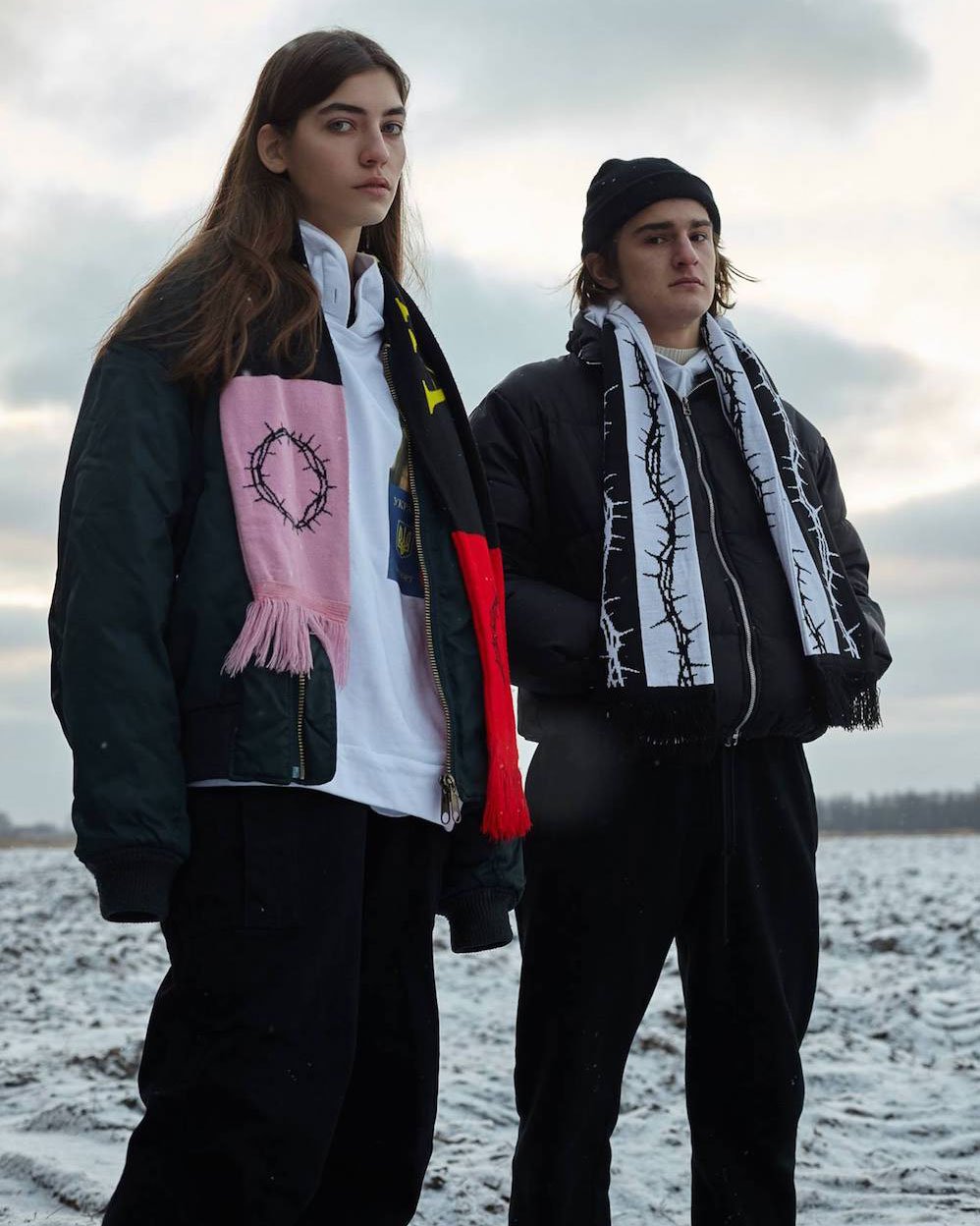
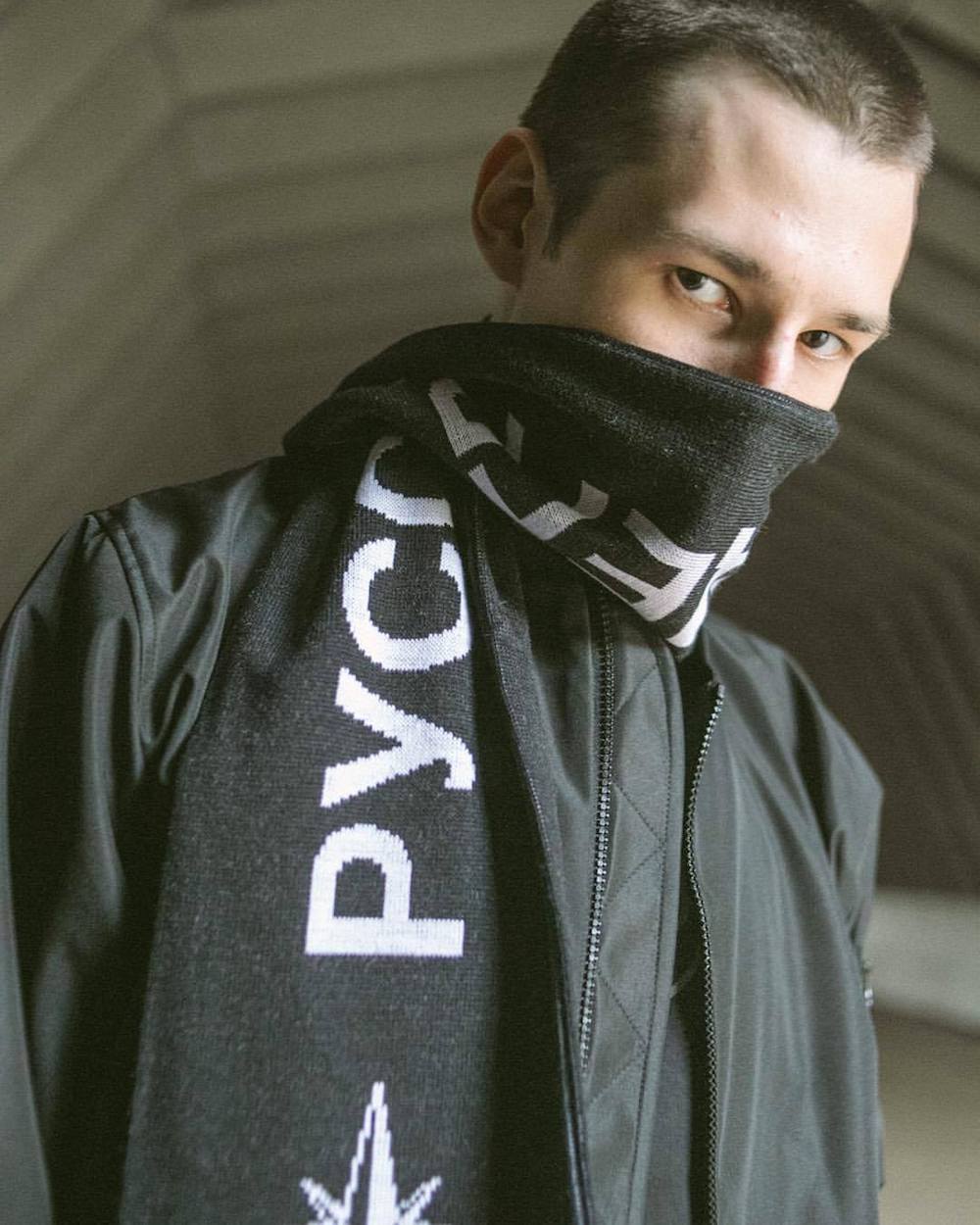
-1250.jpg)
